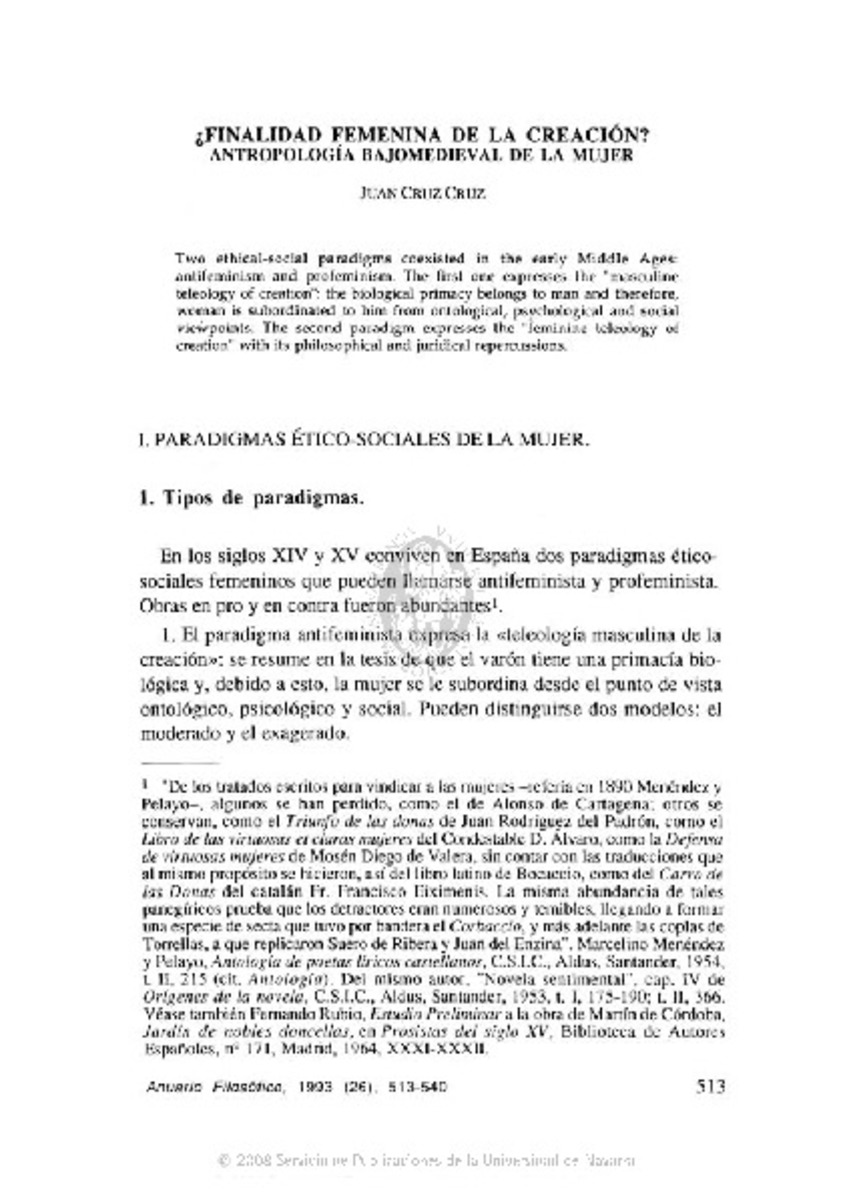Full metadata record
| DC Field | Value | Language |
|---|---|---|
| dc.creator | Cruz-Cruz, J. (Juan) | es_ES |
| dc.date.accessioned | 2005-05-03T15:30:39Z | es_ES |
| dc.date.accessioned | 2007-03-08T16:36:47Z | - |
| dc.date.available | 2005-05-03T15:30:39Z | es_ES |
| dc.date.available | 2007-03-08T16:36:47Z | - |
| dc.date.issued | 1993 | es_ES |
| dc.identifier.citation | Anuario Filosófico, 1993 (26), 513-540 | es_ES |
| dc.identifier.issn | 0066-5215 | es_ES |
| dc.identifier.uri | https://hdl.handle.net/10171/672 | - |
| dc.description.abstract | Two ethical-social paradigms coexisted in the early Middle Ages: antifeminism and profeminism. The first one expresses the "masculine teleology of creation": the biological primacy belongs to man and therefore, woman is subordinated to him from ontological, psychological and social viewpoints. The second paradigm expresses the "feminine teleology of creation" with its philosophical and juridical repercussions. | es_ES |
| dc.format.extent | 93954 bytes | es_ES |
| dc.format.extent | 1892 bytes | - |
| dc.format.extent | 67238 bytes | - |
| dc.format.mimetype | application/msword | es_ES |
| dc.format.mimetype | text/plain | - |
| dc.format.mimetype | application/pdf | - |
| dc.language.iso | spa | es_ES |
| dc.rights | info:eu-repo/semantics/openAccess | es_ES |
| dc.rights | info:eu-repo/semantics/openAccess | es_ES |
| dc.title | ¿Finalidad femenina de la creación? Antropología bajomedieval de la mujer | es_ES |
| dc.type | info:eu-repo/semantics/article | es_ES |
| dc.identifier.doi | 10.15581/009.26.29910 | es_ES |
Files in This Item:
Statistics and impact
Items in Dadun are protected by copyright, with all rights reserved, unless otherwise indicated.






